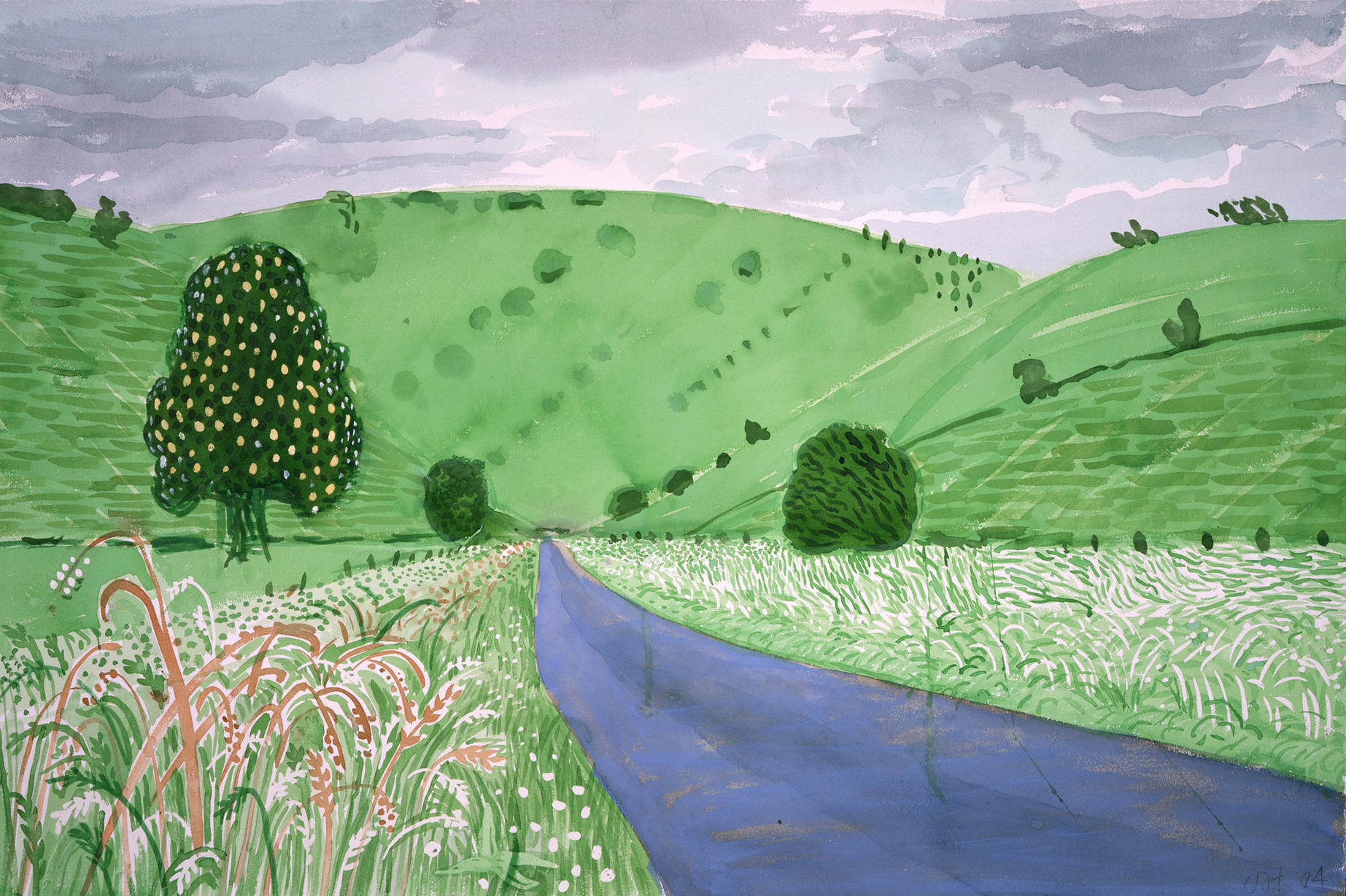Elemental art

Credit: Kathi & Gary Cypress Collection
“A Larger Valley, Millington,” a watercolor painting by David Hockney, is on display at the J. Paul Getty Museum at the Getty Center as part of its “Luminous Paper” exhibition, which runs through Oct. 23.
Luminous Paper
Through Oct. 23
J. Paul Getty Museum, FREE
By Denise Mai
Aug. 1, 2011 1:17 a.m.

Credit: The J. Paul Getty Musum, Los Angeles
“Durham Cathedral and Castle,” a watercolor painting by Thomas Girtin, is on display at the J. Paul Getty Museum as part of its “Luminous Paper” exhibition.
Clarification: The original version of this article contained an error. Julian Brooks is the exhibition’s curator.
Even among the other simple drafts and outlines on display, one sketch in the J. Paul Getty Museum’s exhibition “Luminous Paper: British Watercolors and Drawings” at the Getty Center seems particularly unfinished.
Titled “Petra,” after the historic city located in present-day Jordan, the rough drawing is representative of the first portion of the two-pronged exhibit, which details the use of watercolor as both an outlining tool and final medium in the 18th and 19th centuries.
The sketch features British artist Edward Lear’s partial watercolor shading and pencil outline of a historic amphitheater, with his cursive annotations still visible amid the faint color, even though the sketch is dated from 1858. It was created in only 30 minutes, since Lear was hurrying to leave the city after being ordered out by local tribesmen.
Because of its creation under such dire circumstances, “Petra” emphasizes the strength of watercolor as an easily transportable medium that was initially used as a preparatory medium, according to comtemporary artist Richard Houston.
“At first, watercolor was just thought of as a way of drawing or a tool for studies,” Houston said. He will present watercolor workshops and demonstrations at the museum every Sunday in September to accompany the exhibition.
Watercolor began to flourish as a recognized medium by the late 1700s, when artists working with watercolor began to make larger works and utilized richer colors to form a powerful statement.
“I would say J.M.W. Turner and Thomas Girtin were the most influential in the medium of watercolor,” said Julian Brooks, the exhibition’s curator. “Girtin expanded the range of colors, with dark greens and browns which no watercolor artist would imagine using before that ““ making them more like oil paintings.”
According to Houston, Turner drew upon similar inspiration, pushing the boundaries of watercolor by using techniques from his experience in oil painting such as letting colors mix more organically and experimenting with texture.
In the displayed “Conway Castle, North Wales,” Turner added texture to the rocks with his thumb, the ridges of his thumbprints still visible today. Turner utilizes another technique in “Long Ship’s Lighthouse, Land’s End” by using his thumbnail to scratch away at the paint and expose white paper to form seagulls. Magnifying glasses are placed in the exhibition rooms for better view of these minute details.
While most of the works on display date from the 1700s and 1800s and are housed in two conjoined exhibition rooms, the small wing across from them features three watercolors from renowned contemporary artist David Hockney, who painted them in the early 2000s. The contrast between the works in the larger rooms and those in the compact display is drastic, thanks to Hockney’s bright abstract colors and bolder, less detailed strokes.
“Watercolor is often seen as a historical medium, so this is a nice little annex to the other collection to show that watercolor is alive and well and big-name artists are still using it,” Brooks said.
Ben Evans, staff research associate of the UCLA painting and drawing department, said that although shows focusing on watercolor are few and far between, he believes this exhibition will influence local artists and their future work.
“Here in L.A., I don’t think (watercolor) is explored as a medium a lot, but this exhibition will probably be an impetus for people to pick up their watercolors,” Evans said. “I bet this will have an effect on somebody struggling (for ideas) ““ they’ll pull out their watercolors again and give them another shot.”


